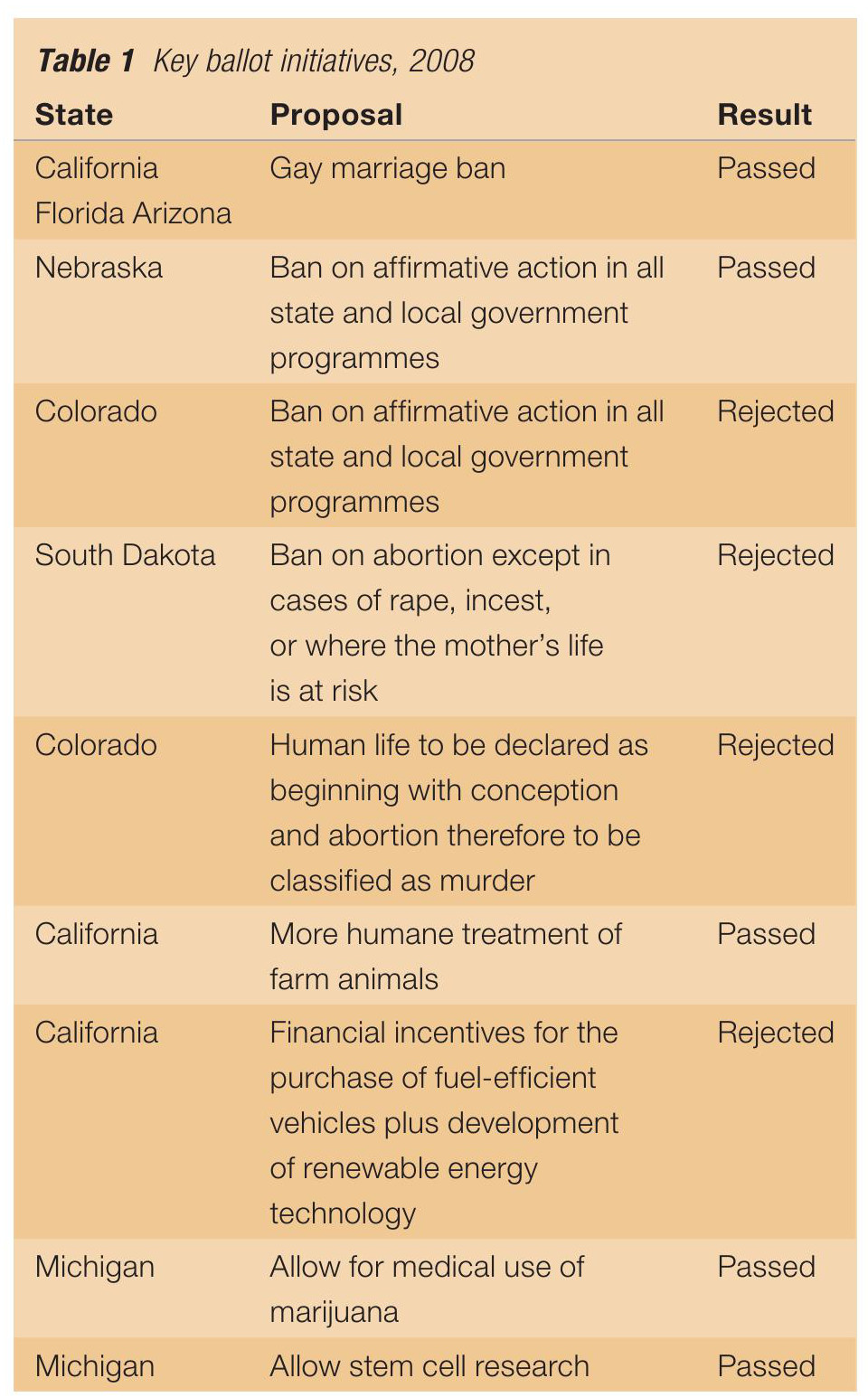
Referendums are a mechanism of direct democracy. They allow citizens to vote on a particular issue (rather than for a representative, as is the case in elections) and thus to participate directly in the decision-making processes of governments. Referendums are called by the governing authorities: they are statutory in 49 states to approve any change to the state constitution.More common, though, are ballot initiatives or propositions. These are allowed in 36 of the 50 states and are called by citizens themselves Individuals or, more usually, interest groups have to collect a certain number of signatures (which varies between states) in order to place a proposal before voters, and a 50% majority is required for a ballot proposition to become law. In 2008, 153 state-wide ballot initiatives were put to voters at the same time as the presidential and congressional elections, and some of the most notable are set out in Table 1.
Ballot initiatives undoubtedly give the public a say in state government in a way that representative democracy might not always achieve, and they undoubtedly stimulate debate and interest in public policy. As can be seen from Table 1, many initiatives concern social or moral issues that many citizens feel very strongly about, but cannot convey through elections. They also allow individual states to adopt different policies in ways that reflect local opinion, as can be seen from the differing results on similar propositions on affirmative action in Nebraska and Colorado in 2008.
Your organisation does not have access to this article.
Sign up today to give your students the edge they need to achieve their best grades with subject expertise
Subscribe




